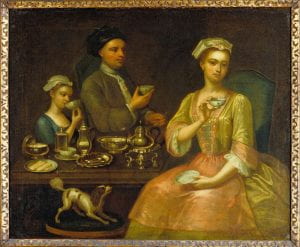I remember as a kid, going to the grocery store with my parents. We’d enter the doors, grab a cart, and make our way through the walls of food. I remember thinking of it as such an exciting place, all these colourful objects, with different names, from different places. At the end of our shopping trip, we’d begin to load our groceries onto the conveyer belt, and right by the cashier there would always be an array of chocolate bars, and candy. I would always beg to get one and if I got my way, on the drive home, I’d enjoy the sweet, irresistible, sugar favour.

My point is, in my life, sugar has always been a symbol of happiness, a reward, a gift. As I grew older I began to wonder why that was, sure, the obvious reason, it tastes good, but there are so many cons to the consumption of sugar as well. The consumption of sugar has been linked to obesity, diabetes, and even cancer. But still, the world is obsessed with it, and I’ve recently learnt that this American obsession with sugar isn’t anything new.
During the early 1600’s in Europe, sugar was only accessible to the people who could afford it,  which at that time, was the wealthy. People would show off their wealth by serving pastries, and chocolates to guests, and even putting piles of sugar on display in their households. The reasons for the scarcity of this sought after sweetener, was because in these early times of domesticated sugar, it was only the British colonizers harvesting the sugarcane themselves. As other settlers began to catch onto this (white) gold mine at stake, they realized that they’d need more hands on deck to be able to appease to the needs of Europe, and eventually, the rest of the world.
which at that time, was the wealthy. People would show off their wealth by serving pastries, and chocolates to guests, and even putting piles of sugar on display in their households. The reasons for the scarcity of this sought after sweetener, was because in these early times of domesticated sugar, it was only the British colonizers harvesting the sugarcane themselves. As other settlers began to catch onto this (white) gold mine at stake, they realized that they’d need more hands on deck to be able to appease to the needs of Europe, and eventually, the rest of the world.
This goldmine of an industry wasn’t native to America though, the sugarcane plant is naturally grown in Southeast Asia. The plant had been discovered by settlers in the past, but they weren’t able to keep the plants fresh for their travels home. The value of the plant wasn’t obvious to Europe until Columbus brought seeds to the Dominican Republic. This environment was chosen because of its tropical climate.
The first group of African people were taken to America in the early 1600s to begin their work in the sugarcane fields. The job wasn’t pleasant, and because they were enslaved, they didn’t have the option to refuse work like the original colonizers did. Now those men owned plantations, where they owned, and controlled all of the enslaved people within it.
As the demand for sugar grew, so did the profit, and the population of enslaved African people. This boom was between 1600 and 1650, this high of a demand caused the African enslaved population to go from 200,00 to 800,00. “Sugar was the engine of the slave trade that brought millions of Africans to the Americas” . By 1655, sugarcane was the most valuable crop, and Louisiana plantations were producing 1/4 of the worlds sugar supply.
This history between the African-American community, and the sugar/food industry hasn’t been fully left behind, we are still producing, and consuming sugar, and its an industry that stemmed from historic events, therefore our knowledge of the past shouldn’t be left behind in the first place. We can be quite oblivious to the history, and starting point of many of the items we buy each and every day. And learning just a little bit more about our world’s history is one step in the right direction.
Research Sources:
https://www.livescience.com/4949-sugar-changed-world.html
https://www.history101.com/life-sugar-plantations-1600s/
https://www.nytimes.com/interactive/2019/08/14/magazine/sugar-slave-trade-slavery.html
https://www.statista.com/statistics/495973/sugar-production-worldwide/

Hey Isy,
Your post is awesome. Your a really good writer, and you totally capture the personal and historical aspect as well. Its really good.
Your the best
Adlih